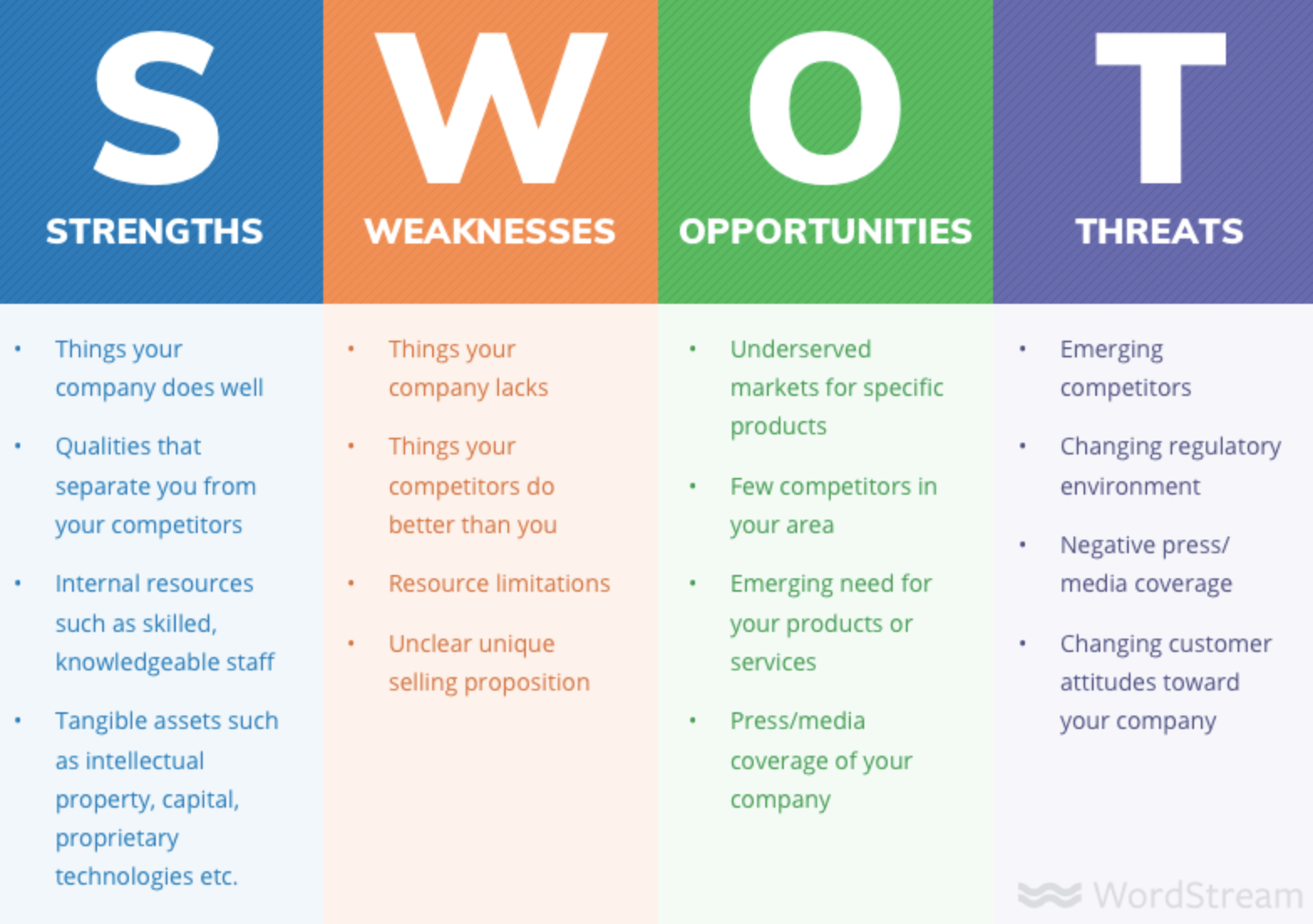Buying a Business - A Step-by-Step Guide: From Aspiration to Acquisition
This step-by-step guide to buying a business provides a comprehensive roadmap for achieving a successful acquisition. Starting with defining your business's vision and goals, conducting thorough market research, and evaluating financial readiness, this guide will walk you through how to identify the right business, negotiate a win-win deal, conduct due diligence, and ensure a smooth post-acquisition integration.
Following this guide is essential to navigate the complexities of business acquisition systematically. Each step contributes to a well-informed decision-making process and sets the foundation for a successful acquisition journey.
Click on each corresponding link to jump ahead:
- Importance of Buying a Business for Growth and Expansion
- Understanding the Acquisition Process
- Setting Your Aspiration – Defining Your Goals
- Preparing for the Acquisition Journey
- Identifying the Right Business to Acquire
- Financial Preparedness – Determining Your Budget
- Negotiating the Deal – Strategies for Success
- Due Diligence – Ensuring a Smooth Acquisition
- Post-Acquisition Integration - Ensuring Business Continuity
- Common Challenges and Pitfalls in Business Acquisition
- Final Thoughts and Future Opportunities
Whether you're an aspiring entrepreneur looking to take the next big leap or a seasoned business owner aiming for growth and expansion, this guide is tailored to equip you with the knowledge and strategies needed to embark on a successful acquisition journey.
Contact the professionals at Profitworks if you have any questions!
1. Importance of Buying a Business for Growth and Expansion

Are you looking to grow your business? Continue reading to learn how.
A business acquisition presents a remarkable opportunity for growth and expansion, enabling entrepreneurs to tap into established markets, acquire valuable assets, and accelerate their business ventures.
By strategically acquiring existing businesses, you can leverage their customer base, brand reputation, and operational expertise to drive your own entrepreneurial success.
In today's competitive business landscape, organic growth can be time-consuming and challenging. However, with the right acquisition, you can fast-track your journey to success.
If you want to buy a business in Mississauga or any other place, this guide will help you identify the right businesses to acquire, negotiate favourable deals, and ensure a smooth post-acquisition integration, setting the foundation for continued growth and prosperity.
Ready to turn your aspirations into reality? Let's dive into the intricacies of business acquisition, unravelling each step along the way.
Empowered with the insights and tools from this guide, you'll be prepared to navigate the acquisition process with confidence and make informed decisions that lead to lasting success.
2. Understanding the Acquisition Process
A. Definition and Benefits of Business Acquisition
Before embarking on your acquisition journey, it's essential to understand what business acquisition entails and the benefits it offers.
Business acquisition refers to the process of purchasing an existing company, either in part or in its entirety, to expand market share, gain competitive advantages, or enter new markets. The benefits of business acquisition are manifold.
- Firstly, it allows you to bypass the challenges of building a business from scratch as you acquire an established enterprise with an existing customer base and operational infrastructure.
- Secondly, the acquisition provides access to valuable intangible assets, such as patents, trademarks, and brand reputation, which can give your business a competitive edge.
- Finally, business acquisition can result in significant cost savings and synergies, leading to improved financial performance.
B. Types of Business Acquisitions
Business acquisitions can take various forms, each with its legal and financial implications. The most common types of business acquisitions include:
- Asset Acquisitions: In an asset acquisition, the buyer purchases specific assets and liabilities of the target company rather than acquiring the entire business. This approach allows the buyer to choose which assets and liabilities they want to assume, mitigating potential risks.
- Stock Acquisitions: In a stock acquisition, the buyer purchases the ownership (shares) of the target company, effectively acquiring the entire business, including all assets, liabilities, and obligations. This approach provides a more straightforward transfer of ownership but also carries potential hidden liabilities.
- Mergers: A merger is a strategic combination of two or more companies to form a single entity. Mergers can be either horizontal (between companies in the same industry), vertical (between companies in different stages of the supply chain), or conglomerates (between companies in unrelated industries).
Understanding the different types of acquisitions will help you determine the most suitable approach based on your strategic goals, financial capabilities, and risk tolerance.
C. Key Factors to Consider Before Deciding to Acquire a Business
Acquiring a business is a significant undertaking that requires careful consideration of various factors. Before making this critical decision, evaluate the following key factors:
- Strategic Fit: Determine whether the target business aligns with your long-term strategic goals and complements your existing operations.
- Financial Feasibility: Conduct a thorough financial analysis to assess the target company's profitability, cash flow, and potential for growth.
- Market Opportunities: Evaluate the target company's market position, competitive landscape, and growth prospects.
- Industry Dynamics: Understand the dynamics of the industry in which the target company operates, including regulatory challenges and market trends.
- Culture and Team Compatibility: Assess the cultural fit between your organization and the target company, as well as the compatibility of their teams.
Careful consideration of these factors will help you determine whether acquiring a particular business is the right strategic move for your organization.
3. Setting Your Aspiration – Defining Your Goals

Prior to defining your goals, consider conducting a SWOT analysis.
A. Identifying Your Business Vision and Objectives
As you embark on the acquisition journey, it is essential to have a clear vision for your business and a set of well-defined objectives. Consider what you aim to achieve through the acquisition and how it aligns with your broader strategic vision.
Take time to reflect on your long-term goals, such as expanding into new markets, diversifying your product or service offerings, or gaining a competitive advantage. By identifying your business's vision and objectives, you can ensure that the acquisition aligns with your overall growth strategy.
B. Aligning Your Aspirations with Long-Term Business Goals
Successful business acquisition involves more than just a short-term gain. It requires careful alignment with your long-term business goals. Consider how the acquired business will contribute to your organization's sustainable growth and competitive advantage.
Ensure that the business you plan to acquire complements your existing strengths and can address any existing gaps in your operations.
This alignment will not only enhance the chances of a successful acquisition but also set the stage for a cohesive and prosperous post-acquisition integration.
4. Preparing for the Acquisition Journey
A. Conducting Market Research and Industry Analysis
Before proceeding with any acquisition, thorough market research and industry analysis are indispensable. Understand the target industry's growth prospects, competitive landscape, and potential challenges.
Identify emerging trends and disruptive technologies that may impact the industry in the future. This information will help you identify businesses that are positioned for long-term success and align with your strategic vision.
B. Evaluating Financial Readiness for Business Acquisition
Acquiring a business involves significant financial commitment. Assess your financial readiness by evaluating your available capital, borrowing capacity, and ability to secure additional funding if needed.
Ensure that your organization's financial health can support the acquisition without jeopardizing existing operations or long-term growth plans. Engaging financial experts can provide valuable insights into the financial feasibility of the acquisition.
C. Creating a Contingency Plan for Unexpected Challenges
The business landscape is dynamic, and unexpected challenges may arise during the acquisition process. It is crucial to create a contingency plan to address any unforeseen obstacles that may threaten the success of the acquisition.
Consider potential risks, such as:
- Regulatory changes
- Economic downturns
- Unexpected liabilities
Once these risks are identified, it is now time to develop strategies to mitigate their impact.
Having a well-thought-out contingency plan will demonstrate your preparedness and adaptability as an acquirer.
5. Identifying the Right Business to Acquire

Conduct extensive research to find the right business to acquire.
A. Developing a Target Criteria and Profile
Now that you have a clear vision and a well-prepared plan, it's time to define your target criteria and create a profile of the ideal business you wish to acquire. Consider the following factors when developing your target criteria:
- Industry and Market Niche: Identify industries or market niches that align with your expertise and growth strategy.
- Geographic Location: Determine whether you prefer businesses in specific geographic locations or those with a broad regional or global presence.
- Size and Scale: Define the size of the target business based on revenue, assets, and workforce.
- Financial Performance: Set financial benchmarks to ensure you acquire a financially viable and profitable business.
- Strategic Fit: Analyze how well the target business aligns with your long-term strategic goals.
With well-defined target criteria and profiles, you can efficiently filter potential businesses and focus on those that best fit your acquisition goals.
B. Conducting a Thorough Search for Potential Businesses
Finding the right business to acquire requires a comprehensive search process. Utilize various resources to identify potential target businesses, including:
- Industry databases
- Networking events
- Business brokers
- Professional networks
Collaborate with business advisors and industry experts who can provide valuable insights and recommendations. Keep an open mind during the search process, as hidden opportunities may arise in unexpected places.
C. Assessing the Fit and Compatibility of Target Businesses
Once you've identified potential target businesses, it's time to assess their fit and compatibility with your organization. Beyond financials and industry potential, consider factors like:
- Cultural fit
- Organizational structure
- Management practices
Engage in meaningful discussions with the owners or representatives of the target businesses to gain insights into their operations and work culture. A harmonious cultural alignment will contribute to successful post-acquisition integration.
6. Financial Preparedness – Determining Your Budget
A. Evaluating the Total Acquisition Cost
As you progress toward acquiring a business, evaluating the total acquisition cost is crucial. This cost includes the purchase price of the business, any additional expenses related to legal, accounting, and consulting services, as well as potential post-acquisition investments required for integration.
Work closely with financial experts to conduct a thorough financial analysis of the target business. Assess the value of the assets, liabilities, and intangible assets, such as intellectual property and brand value. This evaluation will help you determine a fair and reasonable acquisition price.
B. Exploring Financing Options and Funding Sources
Unless you have the necessary capital readily available, you'll need to explore various financing options to fund the acquisition. Financing options may include:
- Bank loans
- Venture capital
- Private equity
- Seller financing
Evaluate the advantages and disadvantages of each financing option in light of your organization's financial position and long-term goals. Select the most suitable financing source that aligns with your financial capacity and acquisition strategy.
C. Understanding the Importance of Due Diligence in Financial Preparation
Due diligence is a critical step in the financial preparation for a business acquisition. Engage financial experts to conduct an in-depth assessment of the target company's financial records, including:
- Audited financial statements
- Tax returns
- Cash flow projections
Identify any potential financial risks and challenges that may impact the acquisition's success. A well-executed due diligence process will provide you with a comprehensive understanding of the target company's financial health, enabling you to make informed decisions.
7. Negotiating the Deal – Strategies for Success
There are several steps to take prior to negotiating a deal.
A. Building Rapport and Trust with Sellers
Successful negotiations require building a strong rapport and trust with the sellers. Open and transparent communication is essential to foster a positive negotiation environment.
Seek to understand the sellers' motivations and concerns. Demonstrating empathy and genuine interest in their goals will help establish a collaborative negotiation atmosphere.
B. Essential Components of a Successful Negotiation
Successful negotiation involves addressing multiple components to reach a mutually beneficial agreement. Key components include:
- The purchase price
- Payment terms
- Retention of key employees
- Post-acquisition involvement of the sellers
- Any performance-based incentives
Be prepared to negotiate and compromise to reach a win-win agreement that satisfies both parties' interests. Leverage the insights gained during the due diligence process to support your negotiation positions.
C. Addressing Challenges and Reaching a Win-Win Agreement
Negotiations may encounter challenges or disagreements. Be flexible in your approach and seek creative solutions to address roadblocks.
Avoid adopting an adversarial stance and instead focus on finding common ground. Remember that a collaborative and respectful negotiation process can lead to a more favourable deal for both parties.
8. Due Diligence – Ensuring a Smooth Acquisition
A. Importance of Due Diligence in Business Acquisition
Due diligence is a critical phase of the acquisition process, where you conduct a comprehensive investigation of the target business.
The due diligence process aims to validate the accuracy of the information provided by the seller and identify potential risks and opportunities.
The due diligence process encompasses various areas, including financial, legal, operational, and regulatory aspects. Engage experts in each field to ensure a thorough and rigorous examination.
B. Essential Areas to Review During Due Diligence Process
During the due diligence process, focus on reviewing essential areas that impact the target business's value and potential risks.
Key areas of review may include:
- Financial statements
- Tax records
- Legal contracts
- Intellectual property rights
- Customer contracts
- Employee agreements
Identify any red flags or inconsistencies that may affect the acquisition's success. Addressing these issues during the due diligence process will enable you to make well-informed decisions and negotiate suitable solutions with the sellers.
C. Identifying and Addressing Potential Risks and Red Flags
Due diligence uncovers potential risks and red flags that may not be apparent during initial assessments. Collaborate with your acquisition team and experts to develop strategies for mitigating identified risks and challenges.
Proactively addressing these issues will help ensure a smooth transition during post-acquisition integration and minimize disruptions to business operations.
9. Post-Acquisition Integration - Ensuring Business Continuity
Make sure that your businesses align culturally.
A. Developing a Comprehensive Integration Plan
Post-acquisition integration is a pivotal phase that determines the success of the entire acquisition. Develop a comprehensive integration plan that outlines the steps and timelines for assimilating the acquired business into your existing organization.
The integration plan should address key aspects such as:
- Organizational structure
- Technology systems
- Customer relations
- Employee roles
Assign clear responsibilities and establish communication channels to facilitate a seamless integration process.
B. Effectively Communicating with Employees and Stakeholders
Open and transparent communication is vital during the integration phase. Communicate the benefits and opportunities of the acquisition to employees and stakeholders, emphasizing the shared vision for the future.
Address any concerns or uncertainties, and involve employees in the integration process to foster a sense of ownership and commitment. Clear communication will help ease anxieties and build a cohesive and motivated workforce.
C. Strategies for Smooth Transition and Cultural Alignment
Cultural alignment is essential for successful post-acquisition integration. Recognize and respect the unique culture of the acquired business, while reinforcing the core values of your organization.
Promote cross-team collaboration and knowledge sharing to build camaraderie and trust among employees. Encourage an inclusive and supportive work environment that values diversity and creativity.
10. Common Challenges and Pitfalls in Business Acquisition
A. Identifying and Mitigating Common Acquisition Challenges
Acquiring a business is a complex endeavour that comes with its share of challenges. Common challenges may include:
- Resistance from employees
- Cultural clashes
- Operational inefficiencies
- Unexpected market shifts
Be proactive in identifying these challenges and develop strategies to mitigate their impact. Collaborate with your integration team and experts to address challenges promptly and effectively.
B. Learning from Case Studies and Real-Life Examples
Learning from case studies and real-life examples of successful and failed acquisitions can provide valuable insights. Analyze how other businesses navigated similar challenges and apply those lessons to your acquisition journey.
Understanding the successes and failures of others will help you refine your approach and make well-informed decisions throughout the process.
C. Overcoming Obstacles and Maximizing Success
Approach obstacles with resilience and a solutions-oriented mindset. Treat challenges as opportunities for growth and improvement.
Stay agile and adaptable in your approach, making necessary adjustments as circumstances evolve. By learning from challenges and continuously improving your strategies, you increase the likelihood of a successful business acquisition.
11. Final Thoughts and Future Opportunities
Congratulations on taking the first step toward business acquisition! By embarking on this journey, you have demonstrated your ambition and determination to achieve your entrepreneurial dreams. Remember that every successful entrepreneur started with a vision and took calculated risks to turn that vision into reality.
Owning a business offers not only financial rewards but also the opportunity to make a meaningful impact on your industry, community, and the lives of your employees. Embrace the challenges and uncertainties that come with an acquisition, as they are stepping stones to growth and personal development.


